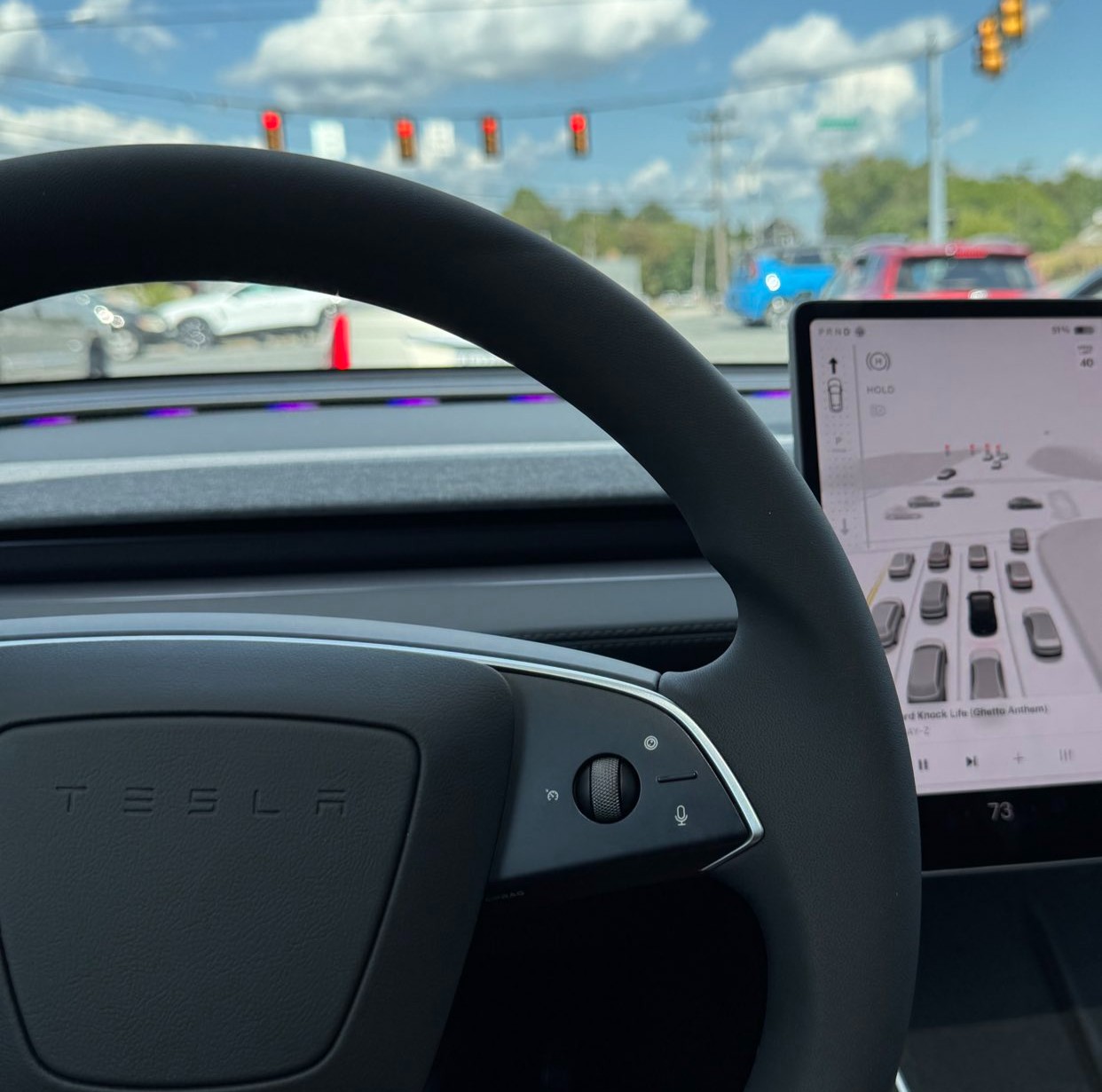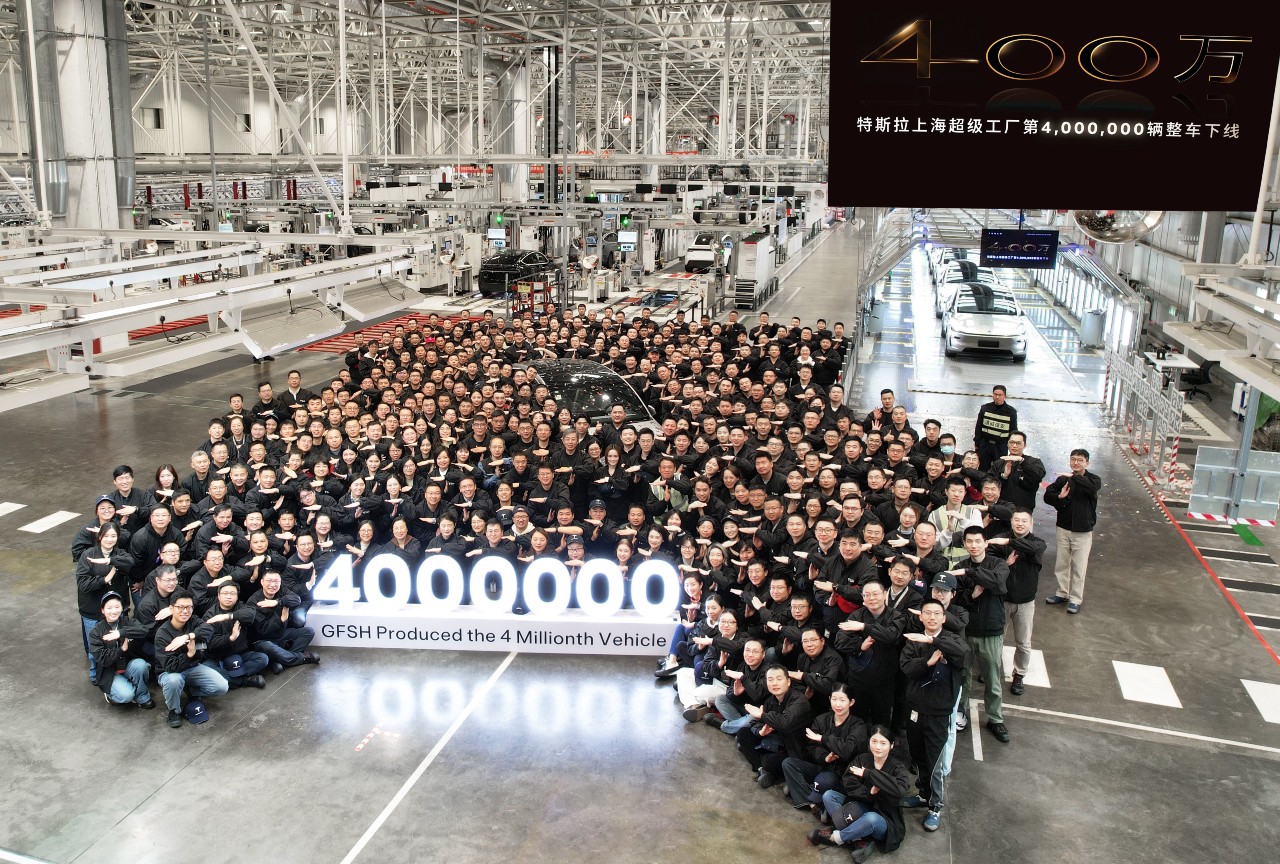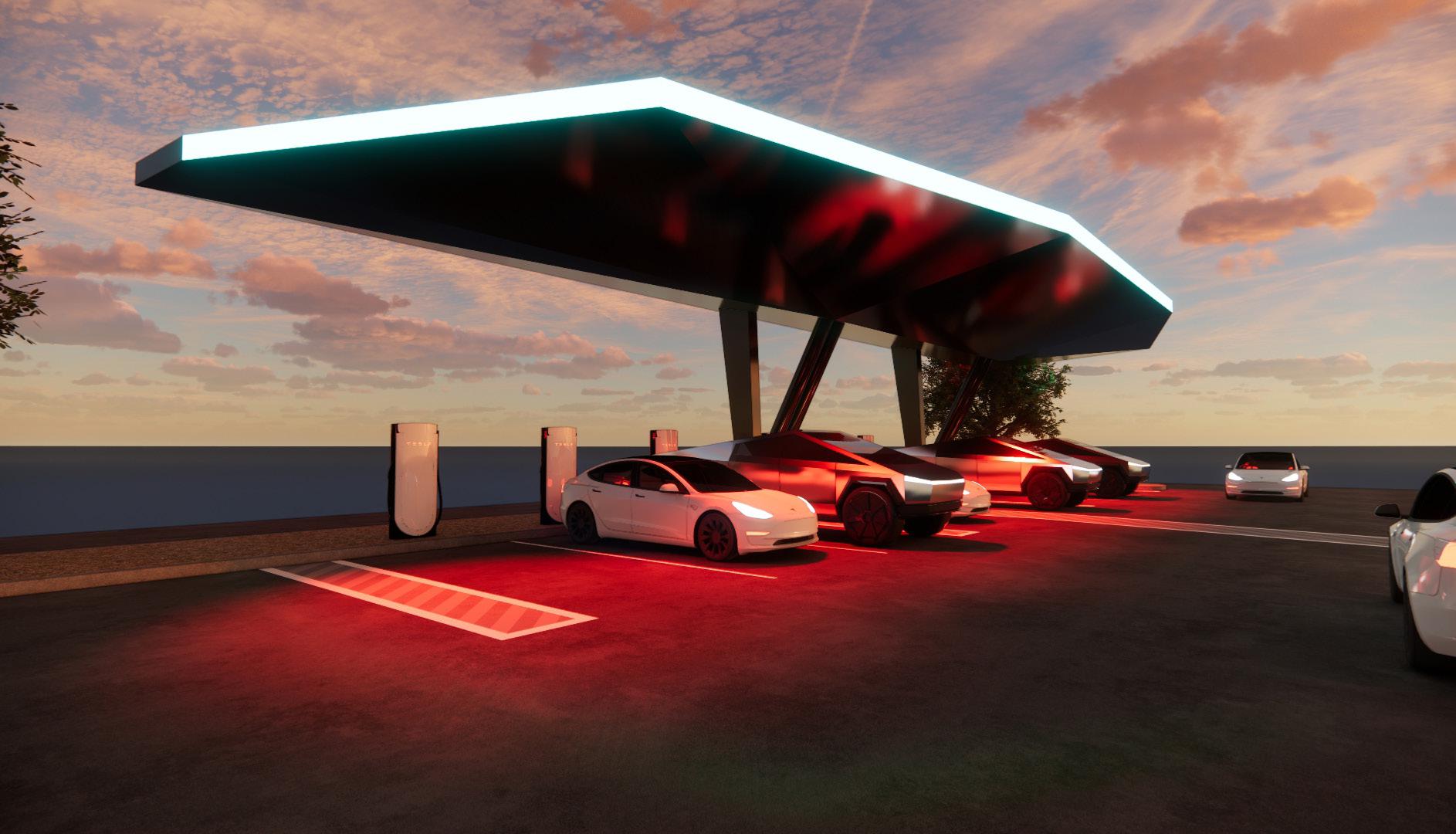News
Tesla Full Self-Driving impressions after three weeks of ownership
I will be fair and tell you all what I truly enjoy, as well as what frustrates me about Full Self-Driving.

Tesla Full Self-Driving is amongst the most robust and refined semi-autonomous driver assistance systems on the market today. After three weeks of ownership, I’ve driven around half of my miles using it, and my impressions put me right in the middle of it being very impressive and needing some work.
Of course, if it were perfect, it would be driving us all around all the time while we sleep, scroll our phones, or watch movies in the cockpit. It does a lot of things very well, and it has managed to impress everyone I’ve put in the passenger’s seat.
However, there are some things that are obvious pain points, situations that need improvement, and areas where I believe it has a long way to go. Regardless, these are things I have noticed, and they may differ from your opinions based on your location or traffic situations.
Tesla Model Y ownership two weeks in: what I love and what I don’t
I’ll try to keep it pretty even and just highlight the things that are truly noticeable with Full Self-Driving. I won’t be too critical of the things that it is bad at, and I won’t try to give it too much of a pat on the back.
I will be fair and tell you all what I truly enjoy, as well as what frustrates me about it.
*Disclaimer: These Full Self-Driving examples were in use with v13.2.9.
Where Tesla Full Self-Driving is Great
Highway Driving
I have yet to have a critical intervention of any kind on the highway. I have driven on easy highways like Rt. 30 in Pennsylvania, and I have driven on congested four-lane parking lots like I-695 near Baltimore, Maryland.
Tesla FSD does a tremendous job on all of it. I usually use the “Hurry” setting of FSD with an offset of between 25 and 40 percent, depending on what I’m doing and where I’m going. Sometimes, I want to push it a bit, and at other times, I’m okay with taking my time and enjoying the drive.
I find the driving style of Hurry is more similar to the traffic around me than the Standard, which tends to drive like an 80-year-old on their way to Bingo.
It does a great job of being considerate, maintaining an appropriate rate of travel, getting over for cars that are tailgating in the left lane after passing traffic, and it always is where it needs to be when it needs to be there.
Taking the Stress Out of Driving
A few nights ago, I was having some trouble sleeping, and I was up at 3 a.m. I decided it would be a good time to get up, grab a breakfast burrito and a coffee, and head to the Supercharger.
(If you don’t know, I do not have home charging, and I will be diving into EV ownership without that in a future article.)
I let FSD drive me to the Supercharger and back while I was done. I was able to enjoy a beautiful sunrise without having to focus all my attention on the traffic around me, while still maintaining enough attention to the road to keep the driver monitoring happy.
It was really nice. I enjoyed the ride, and it felt like I was in an Uber with a very careful driver while I enjoyed the rest of my coffee and peeked at the sky every few seconds.
Learning and Improving
A few weeks ago, I approached an “Except Right Turn” stop sign. I have discussed how these are a Pennsylvania specialty, and the first time FSD encountered one in my Model Y, it stopped, even though we were heading right.
I took over, submitted a voice memo to Tesla about it, and went on with my evening. A week later, the car approached the same turn, and, to my surprise, it proceeded through the Stop Sign correctly, safely, and at an appropriate speed.
It was nice to see this improvement, especially since this is one of those regional issues that Tesla will need to address before FSD is fully autonomous. The change even impressed my Fiancé, who was with me during both instances we came upon this turn.
Where Tesla Full Self-Driving Could Be Better
Auto Wipers
Good gravy, these Auto Wipers always seem to give me a good laugh.
They never really have the right speed; they are either way too fast or not fast enough. There’s never been a happy medium.
It also loves to activate a single wipe of the blade at the strangest times. I’ve noticed that it actually seems to activate at the same spots on the road sometimes. There’s a hanging branch near my house, and every time we go under it and FSD is activated, the wipers wipe once.
It would be nice to set your own intervals for the wipers, but I am okay with the current presets. I do hope the Auto Wipers improve, because it could be one of the best features the car has if it’s more accurate.
It Struggles with Signs That Require Reading
The “Except Right Turn” sign is one example, but another is a “Stop Here on Red” sign that is recessed from an intersection at a stop light if it’s a tighter turn. Recently, I had to slam on the brakes as it was headed straight through one of these signs.
It can recognize Stop Signs and Yield Signs, but signs with instructions for an intersection appear to present a greater challenge for FSD.
Sometimes, It Just Does Things I Don’t Like
There is a four-lane light near my house; the two right lanes go straight, but the lane furthest right is for turning into businesses past the intersection. Some people tend to go in that far right lane, even if they have no intention of turning right into the businesses, and take off quickly from the light to cut ahead.
I’m not saying it’s illegal or even wrong, but I personally prefer not to do it. I am never in that much of a hurry.
FSD tried to do that the other day; I intervened and kept it in the lane that is designed to go straight. I wouldn’t say this is technically an intervention. I would just say it’s a move I wasn’t super comfortable with because I know people tend to get frustrated with those who cut the line. It’s an etiquette issue, and I didn’t want FSD to do it.
I also am not a huge fan of when there is no traffic in the right lane, yet it continues to cruise in the fast lane. I was taught to drive in the right lane and pass in the left lane. There are states where cruising in the left lane is illegal, and it sometimes tends to stay in the passing lane too long for my liking. I will turn on my right signal and get back into the correct lane.
These are totally disputable, and I am aware of that. Some people might not see a huge issue with these two examples, and I can understand that. My courtesy on the road differs from others, and that’s okay.
All in all, I’m pretty happy with FSD, and I will be continuing my Subscription after the three-month trial ends. In the coming days, I’ll be picking up a camera for FSD videos, and I’ll be able to embed examples of what I mean, as well as share full-length videos of my drive.

News
Tesla announces major milestone at Gigafactory Shanghai
First deliveries started in December 2019, with the first units being given to employees. By the end of 2020, the plant was building cars at a run rate of around 150,000 vehicles annually.

Tesla has announced a major milestone at its Chinese manufacturing facility, Gigafactory Shanghai, confirming on Monday that it had built its four millionth vehicle.
Tesla Gigafactory Shanghai first started building cars back in October 2019 with Model 3 assembly, just ten months after the company broke ground on the plant’s 86-hectare piece of land.
First deliveries started in December 2019, with the first units being given to employees. By the end of 2020, the plant was building cars at a run rate of around 150,000 vehicles annually. Production continued to ramp up, and by September 2023, less than three years after it started building Tesla’s EVs, it had built its two millionth vehicle.
Fast forward to December 2025, and Tesla has confirmed that four million cars have rolled off of production lines at the plant, a major milestone in the six short years it has been active:
Produced our 4 millionth vehicle at Gigafactory Shanghai🎉
Thanks to all our owners and supporters❤️ pic.twitter.com/DayVXUr220— Tesla Asia (@Tesla_Asia) December 8, 2025
The capacity at Giga Shanghai is exceeding 950,000 vehicles per year, and this year, the company has delivered 675,000 cars through the first three quarters. It is also the only plant to manufacture the Model Y L, a longer wheel-based configuration of the all-electric crossover that is exclusive to the Chinese market.
Gigafactory Shanghai’s four million cars have not all stayed within the domestic market, either. For a considerable period, the factory was exporting a significant portion of its monthly production to Europe, helping Gigafactory Berlin supplement some Model Y volume and all of its Model 3 deliveries. This is due to the Berlin plant’s exclusive production plans for the Model 3.
The site is one of the most crucial in the company’s global plans, and Gigafactory Shanghai’s incredible pace, which has led to four million production units in just about six years. It’s fair to say that it won’t be long until we’re seeing Tesla celebrate the plant’s five millionth vehicle produced, which should happen sometime late next year or in early 2027, based on its current manufacturing pace.
The company also builds the Megapack on the property in an adjacent Megafactory.
News
Tesla gamifies Supercharging with new ‘Charging Passport’
It will also include things like badges for special charging spots, among other metrics that will show all of the different places people have traveled to plug in for range.

Tesla is gamifying its Supercharging experience by offering a new “Charging Passport,” hoping to add a new layer to the ownership experience.
While it is not part of the Holiday Update, it is rolling out around the same time and offers a handful of cool new features.
Tesla’s Charging Passport will be available within the smartphone app and will give a yearly summary of your charging experience, helping encapsulate your travel for that year.
It will also include things like badges for special charging spots, among other metrics that will show all of the different places people have traveled to plug in for range.
Tesla has just introduced “Charging Passport,” a new yearly summary of your charging.
• Charging badges: Iconic Charging badge (for visiting places like the Tesla Diner, Oasis Supercharger, etc), Explorer badge, green saver badge, etc.
• Total unique Superchargers visited
•… pic.twitter.com/c1DHTWXpj7— Sawyer Merritt (@SawyerMerritt) December 8, 2025
Tesla will include the following metrics within the new Charging Passport option within the Tesla app:
- Charging badges: Iconic charging badges for visiting places like the Tesla Diner, Oasis Supercharger, etc., Explorer Badge, and more
- Total Unique Superchargers Visited
- Total Charging Sessions
- Total Miles Added during Charging Sessions
- Top Charging Day
- Longest Trip
- Favorite Charging Locations
This will give people a unique way to see their travels throughout the year, and although it is not necessarily something that is needed or adds any genuine value, it is something that many owners will like to look back on. After all, things like Spotify Wrapped and Apple Music Replay have been a great way for people to see what music they listened to throughout the year.
This is essentially Tesla’s version of that.
With a handful of unique Superchargers already active, Tesla is also building some new ones, like a UFO-inspired location in New Mexico, near Roswell.
Tesla is building a new UFO-inspired Supercharger in the heart of Alien country
News
Tesla launches its coolest gift idea ever just a few weeks after it was announced
“Gift one month of Full Self-Driving (Supervised), which allows the vehicle to drive itself almost anywhere with minimal intervention.”

Tesla has launched its coolest gift idea ever, just a few weeks after it was announced.
Tesla is now giving owners the opportunity to gift Full Self-Driving for one month to friends or family through a new gifting program that was suggested to the company last month.
The program will enable people to send a fellow Tesla owner one month of the company’s semi-autonomous driving software, helping them to experience the Full Self-Driving suite and potentially help Tesla gain them as a subscriber of the program, or even an outright purchase.
Tesla is going to allow owners to purchase an FSD Subscription for another owner for different month options
You’ll be able to gift FSD to someone! https://t.co/V29dhf5URj
— TESLARATI (@Teslarati) November 3, 2025
Tesla has officially launched the program on its Shop. Sending one month of Full Self-Driving costs $112:
“Gift one month of Full Self-Driving (Supervised), which allows the vehicle to drive itself almost anywhere with minimal intervention. All sales are final. Can only be purchased and redeemed in the U.S. This gift card is valued at $112.00 and is intended to cover the price of one month of FSD (Supervised), including up to 13% sales tax. It is not guaranteed to cover the full monthly price if pricing or tax rates change. This gift card can be stored in Tesla Wallet and redeemed toward FSD (Supervised) or any other Tesla product or service that accepts gift card payments.”
Tesla has done a great job of expanding Full Self-Driving access over the past few years, especially by offering things like the Subscription program, free trials through referrals, and now this gift card program.
Gifting Full Self-Driving is another iteration of Tesla’s “butts in seats” strategy, which is its belief that it can flip consumers to its vehicles and products by simply letting people experience them.
There is also a reason behind pushing Full Self-Driving so hard, and it has to do with CEO Elon Musk’s compensation package. One tranche requires Musk to achieve a certain number of active paid Full Self-Driving subscriptions.
More people who try the suite are likely to pay for it over the long term.








